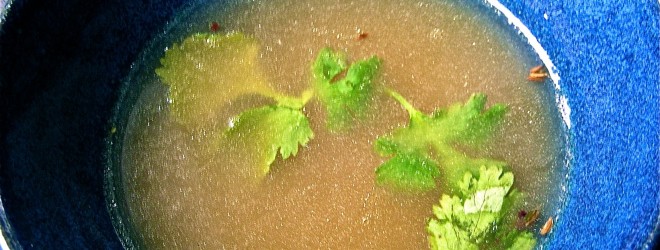The graduated diet, or sansarjana krama, is an approach to eating recommended by Ayurveda when digestion is weak, in the presence of ama, or while undergoing powerful cleansing therapies called pancha karma. Using the analogy of building the fire, the graduated diet is like the kindling used to start and stoke the digestive fire, feeding it small amounts of food given in increasingly larger amounts over a period of three to seven days, until proper digestion is established.
The first food given on the first day of the graduated diet is a thin rice soup called peya. This is prepared by cooking basmati or partially-milled red rice in eight times its volume of water of water until it is a soft, thin porridge. To speed up the cooking process, a flaked rice called ‘pauwa’ is sometimes used instead, because it cooks up very quickly. Peya is the easiest of all the foods to digest. For weak patients with dryness and mucosal sensitivity, moistening cereals such as oats can be used instead.
If the peya is properly digested, a thicker rice porridge called vilepi can be introduced next, prepared by cooking rice in four times its volume of water. If this is well digested, the next meal is yusha or kitchari. Traditionally, there are two types of kitchari: the first called akrita yusha prepared without spices and salt; and the second type called krita yusha, which is prepared spices and salt, and eaten with fermented vegetables. Following this, the last meal during the graduated diet is a meat soup called mansa rasa (‘meat juice’), prepared by stewing meat for several hours, and skimming off any fat before serving. At this stage, proper digestion should be re-established, and a normal diet can followed, but with an emphasis on soups and stews, prepared with herbs and spices to augment digestion.
The graduated diet is traditionally implemented over a period of three to seven days, beginning with peya and ending with mansa rasa, depending on whether regimen required is mild, medium or strong. The following table illustrates how the graduated diet can be implemented over a period of three to seven days:

In some cases it is recommended that the patient continues eating kitchari or a modified version of this dish for several weeks as part of a sustained detoxification program. Although not necessarily an optimal source of nutrients, kitchari does provide sufficient protein, fat and carbohydrate to maintain the body in a good state of health. One variation is to add steamed vegetables to help with detoxification and supply the body with additional nutrients. This forms a solid basis for a vegetarian diet, along with dairy products such as boiled milk, yogurt, and ghee.


